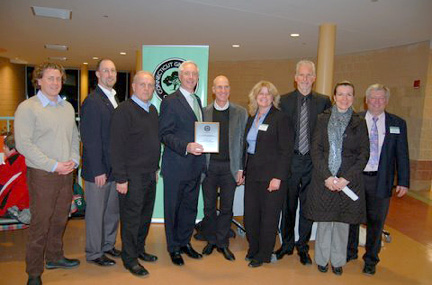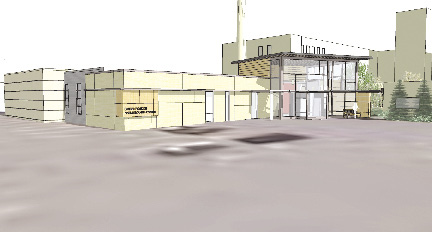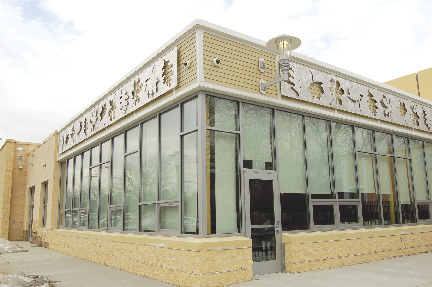In these challenging economic times, design and construction professionals increase their focus on their existing clients to make sure service needs are being met, and we find more opportunities for understanding their business issues. Clients are expecting more "bang for the buck," more lean and more green. In 2007 and prior to this great recession, new models for project delivery like Integrated Project Delivery (IPD) and lean construction were being proposed as a better and different way for design and construction firms to compete. In 2008, in preparation for new green building certification process overhaul by the U.S. Green Building Council (USGBC), thousands of design and construction professionals in New England obtained their LEED Accredited Professional (LEED AP) designation to differentiate their firms as leaders in the LEED green building certification program. Now in the spring of 2011, firms in the northeast who have been successful in weathering the recession are beginning to experience success in lean and green project delivery. We expect this trend will continue.
Here are some shared insights gained on a recent project completed involving a high performance school building in Connecticut. The high performance building project involves the Interdistrict Discovery Magnet Elementary School in Bridgeport adjacent to the Discovery Museum, Veteran's Park and Sacred Heart University. The 63,000 s/f school recently opened and will serve 500 students Pre-K through 8th grade from Bridgeport (70%) and six surrounding communities (30%). The building is a great example of "built for environment" and an ideal setting to teach and learn the earth sciences. The landscape features wetlands that are closer to the building than typically allowed by land use permits in Connecticut to connect the students to what they are learning about: environmental protection, natural resource conservation and LEED by example.
The Magnet School owner is the city of Bridgeport and the school construction program manager was O&G Industries. Svigals + Partners was the project architect with the ecological perspective of Barry Commoner and a holistic design vision of "everything is related" in ecology. Svigals' design allowed all aspects of the buildings architecture to contribute to both the tasks and the spirit of the building's environment. GZA was the site geotechnical engineer and wetlands consultant to Svigals. We were given the opportunity to consult early with collaborative team involvement to help conceptually plan for the building's footprint as close to the surrounding wetlands and trees as possible with the ability to mitigate negative impacts form construction activities. The site's contours were integrated into the design. The result may be a new record in the state of Connecticut for building closest to a regulated wetland, and built safely in compliance with permits.
The building was oriented to maximize the amount of daylight entering the school, including a courtyard to allow southern light exposure. Photo-voltaic solar power, energy-efficient lighting products and layout were designed in collaboration with lighting and LEED consultant, Altelier Ten. Several sustainable design elements including material recycling, parking lot material re-use and bio-swales for stormwater management designs to divert over 60% of surface water drainage from storm sewers. This project is registered with the certification goal of LEED Gold. Collaboration and proactive communications were the common team attributes mentioned by members of the design and construction team who are summarized in the table (left).
School administrators are working closely with Discovery Museum staff to develop the curriculum, which is science, math and technology-based. The curriculum will also include lessons on recycling, storm water diversion and the importance of planting trees.
On average, green schools use 30 to 50% less energy and 30% less water. Finch explained that this green school could save about $100,000 per year in operational costs. "That's roughly enough to either hire two new teachers, buy 200 computers or purchase 5,000 new textbooks," said mayor Finch.
GZA also is encouraged by the early collaboration expectations for project team using Integrated Project Delivery (IPD) for design and construction of a new addition to Marlborough Hospital for a new Oncology Center in Marlborough, Mass. The complexity of healthcare design and construction can benefit from the efficiency gained through a collaborative IPD team environment. IPD has been described by AIA's California Council as a project delivery approach that integrates people, systems, business structures, and practices through a single point of contact responsibility to collaborate via the talents and creative input of all team participants.
GZA was selected by The S/L/A/M Collaborative, architect/engineers of Glastonbury, Conn., to work on geotechnical engineering design with their IPD construction partner, Tocci Building Companies of Woburn, Mass. in the Criteria or Schematic Design phase. The IPD method brings key design subcontractors into the earlier than the design-bid-build approach to bring emphasis on safety, quality, cost-efficiency and delivery schedule. Building Information Modeling (BIM) is often integrated early into the IPD process to gain three-dimensional and dynamic modeling representations of the building to increase productivity and prevent conflicts in design element. The IPD design phase efficiency can help the construction administration phase to become more of more of a quality control and budget monitoring process. The IPD team is optimistic that significant cost savings will result from the early collaboration among the owner, the design and construction professionals. Past and current patients will also advise the IPD team with their design ideas. Look for an update on IPD lessons learned later this year.
Shown is Bridgeport mayor Bill Finch receiving the USGBC Award for Leadership in Sustainable Design for the construction of the Interdistrict Discovery Magnet School. Shown (from left) are: Tom Nichols, CT GBC SW branch director; Chris Tonzi, GZA; Stan Dynia, GZA; Finch; Barry Svigals, Svigals + Partners; Kathleen Cyr, GZA; Bob Wall, CT GBC director; Ilona Prosol, BVH Integrated Services; and Ray Wiley, O&G Industries.
Wayne Cobleigh, CPSM, is manager of project development for GZA GeoEnvironmental, Inc., Glastonbury, Conn.











